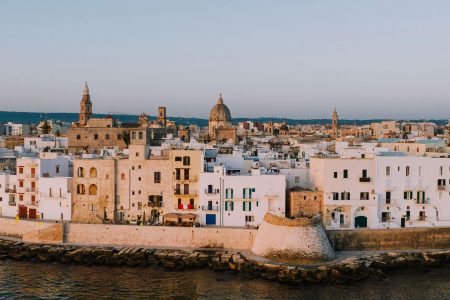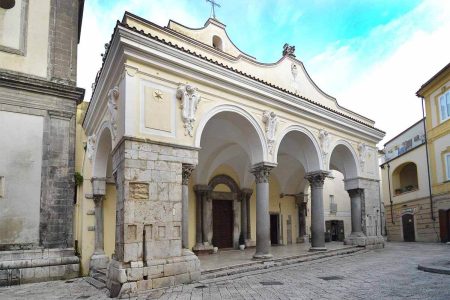Table of Contents
Among the many attractions of the Campania there is undoubtedly its rich range of wines that make its food and wine heritage, appreciated by millions of tourists every year, even richer. Viticulture in Campania began in Roman times, but some activities had also begun with the arrival of the ancient Greeks. The latter were the first to cultivate the seeds of the vitis vinifera, giving rise to native grape varieties such as Aglianico, Greco, Fiano, Falanghina, Biancolella and Piedirosso.
In the course of theRoman Empire, Campania developed an excellent wine-making tradition, so much so that it exported its wines outside the region. After the fall of the Empire and until the Middle Ages, however, wine production declined, and until the 17th century wine became a product for less demanding markets. From this period and for the next two centuries the grape varieties and production techniques, and quality will only be increased from 1980, with the recovery of native grape varieties such as Fiano, Greek and Aglianico. In fact, young winemakers have invested in agronomic practices, the enhancement of native varieties, and more careful winemaking and aging.
Today, Campania is of the most interesting Italian regions for wine, thanks to a mix of history, native varieties, soils (many volcanic), and diverse microclimates (from the coast to inland hills to mountain altitudes) that allow for very varied productions.
The Campania region has many volcanic zones that impart minerality, aroma and structure to the wines. The most important grape varieties are Aglianico among the reds and among the whites Falanghina, Greco, Fiano, as well as other lesser known ones such as Biancolella, Coda di Volpe, Piedirosso, Sciascinoso.
Denominations and main wines of Campania
Campania can boast several wines with DOC designation and DOCG. Here are the most important ones:
- Taurasi DOCG: One of the most important reds. Aglianico grape variety for at least 85%. Ruby/garnet color with aging. Excellent aging potential;
- Greco di Tufo DOCG: Aromatic, mineral white wine with good acidity. Tufaceous soils;
- Fiano di Avellino DOCG: another prestigious white, aromatic, long-lived, elegant;
- Aglianico del Taburno DOCG: Robust red, with Aglianico, in the Beneventano area. Similar to southern Aglianico but with its own characteristics related to the terroir;
- Irpinia DOC: both red and white, include subzones such as Taurasi.
- Sannio DOC: mixed varieties, much experimentation, more "everyday" wines;
- Campi Flegrei DOC, Amalfi Coast DOC, Sorrento Peninsula DOC, Cilento DOC: are coastal DOCs with white and red wines that often reflect the sea and sea air. They express freshness, salinity and fragrance.
Wine styles
- Reds: strong, structured, tannic (especially Taurasi with Aglianico). There are also lighter and more distinctive reds, with varieties such as Piedirosso or Sciascinoso;
- White: fresh, aromatic, mineral. Fiano and Greco in particular give white wines that can age well;
- Rosé, sparkling, dessert wines: less internationally famous, they are nonetheless present, especially in coastal DOCs or some inland DOCs that allow these types.
Tour through the vineyards of Vesuvius with local wine tasting and lunch
So if you too are looking forward to tasting one of these fine wines from Campania, don't miss the Vesuvius vineyard tour with local wine tasting and lunch. Such an experience allows you to immerse yourself in the food and wine traditions of the region with a unique and fun activity.
The tour starts from meeting your tour guide that will take you to the entrance of the Vesuvius vineyards. Then you will be explained the characteristics of the territory local and its microclimate that determine the main properties of the wines. You can take a nice walk through the vineyards together with the sommelier and enjoy incredible panoramic views of the Bay of Naples.
Then you will take a guided tour of a winery of the area to learn the various production methods to create the Lacryma Christi and other renowned wines. Following this, there will be room for a lunch which includes a Vesuvius appetizer with provolone, casatiello, bruschetta with piennolo tomatoes and salami, served alongside Lacryma Christi del Vesuvio Bianco DOP, Rosato and Rosso.
Afterwards you will taste a plate of wheat noodles with piennolo cherry tomato sauce, along with Lacryma Christi Riserva. Finally, you can try a slice of pastiera napoletana To be enjoyed together with a Capafresca Spumante Rosato and Passito Bianco IGT.
Monopoli walking tour: a journey through culture and wine tasting
The walking tour in Monopoli offered by Movery is a unique experience that combines history, culture and local gastronomy in an approximately three-hour tour. Accompanied by an experienced guide, participants will explore the city's historic center, traversing cobblestone alleys and admiring historic monuments such as the Carlo V Castle and the Cathedral Basilica. Along the way, there will be tastings of local delicacies, including Lecce coffee and the fried panzerotto, a symbol of Apulian cuisine. The tour culminates with a tasting of Apulian wines in an atmospheric location, led by a professional sommelier. This experience is ideal for those who want to discover Monopoli in an authentic and engaging way.
You might be interested
Wine tour in Monopoli with tasting of local products
per person Book
Monopoli walking tour: a journey through culture and wine tasting
per person Book
Wine experience in Itria Valley with aperitif and tasting
per person Book
Tour in Sant'Agata de' Goti with winery visit and wine tasting
per person Book
Tour in Sant'Agata de' Goti with winery visit and wine tasting
The tour in Sant'Agata de' Goti proposed is a sensory journey that blends history, landscape and winemaking tradition into an experience lasting about three hours. This medieval village, perched on a tufa terrace at the foot of Mount Taburno, is famous for its picturesque alleyways, historic churches and a winemaking tradition rooted in antiquity. During the tour, participants will have the opportunity to stroll through the historic center, admiring the medieval architecture and discovering picturesque corners of the town. Afterwards, the tour will continue with an experience in one of the renowned local wineries, where it will be possible to learn about the history of the producing family and taste a selection of wines accompanied by typical local products.
Wine experience in Itria Valley with aperitif and tasting
The food and wine tour in the Itria Valley is a sensory experience that combines the beauty of the Apulian landscape with the local wine tradition. Located between the provinces of Bari and Brindisi, the Itria Valley is famous for its vineyards and wineries that produce some of the region's best wines. During the tour, participants will have the opportunity to visit four selected wineries, where they will be greeted by local producers who will share the history of their wineries and grape growing techniques. The experience also includes a rich aperitif with typical local products, such as zucchini and artichokes in oil or chicory, accompanied by five tastings of typical wines from the area. Each tasting will be led by an expert sommelier who will explain the characteristics of the wines and the peculiarities of the area.





0 Comments